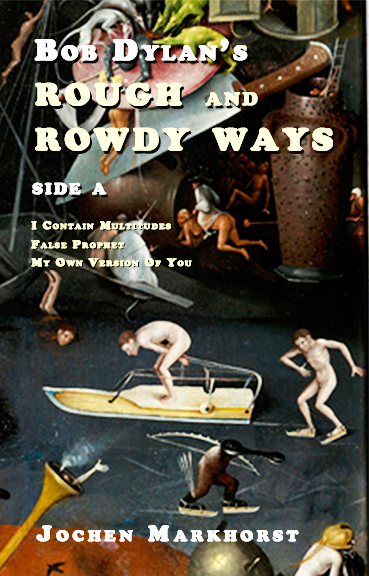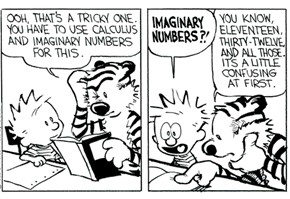Please note: Jochen’s latest book “Rough and Rowdy Ways” is now available on Amazon
———–
by Jochen Markhorst
I We haven’t got any words for it man
I paid fifteen million dollars, twelve hundred and seventy-two cents I paid one thousand two hundred twenty-seven dollars and fifty-five cents
On the first day of the Five Hundred Mercury Days, 13 January 1965, Dylan steps up to the microphone at 7 p.m. in Columbia Recording Studio A at 799 Seventh Avenue to lay the foundation for Part 1 of the Mercury Trio Bringing It All Back Home, Highway 61 Revisited and Blonde On Blonde.
This first evening is mainly acoustic. And almost solo; occasionally John Sebastian plucks a bass, and on some takes Bruce Langhorne’s electric guitar flutters around Dylan’s words. We begin with an aborted and then a complete take of “Love Minus Zero/No Limit”, which is still called “Dime Store” at this point. Producer Tom Wilson then announces “Alcatraz To The Ninth Power” (the working title of “Farewell Angelina”), but is corrected by Dylan:
Dylan: “No! That's not the name of it!”
Wilson: “That’s what you told me when you left.”
Dylan: “I switched songs. This song is… eh… eh… eh…
"Bank Account Blues"!
Wilson: “He he he. Correct cue Bank Account Blues. Take one rolling.”
… and Dylan, now at the piano, plays the song we know as “I’ll Keep It With Mine” – the version that will be released on Biograph in 1985, and which some fans still consider the most beautiful.
Then, Dylan’s cornucopia conjures up “It’s All Over Now, Baby Blue”, throws out “Bob Dylan’s 115th Dream”, followed by a breathtaking “She Belongs To Me” and a magical, acoustic solo version of “Subterranean Homesick Blues” (the take that will appear on The Bootleg Series 1-3 in 1991).
And now, still in the first hour of the first day of recording for the first part of the Mercury Trio, we get “Sitting On A Barbed-Wire Fence” for the first time. At least, the recording sheet labels the song as “Barbwire”, which on the tape box has been corrected to “Sitting On A Barbed Wire Fence”.
A funny, unintentional, musical historical red herring, as we now know. The treasure trove that is The Bootleg Series 12 – The Cutting Edge 1965-66 (2015), the 18-CD box set containing pretty much everything Dylan got up to in the studio (and elsewhere) during those mercurial 500 days, puts an end to the Barbwire myth: track 9 on CD1 is clearly labelled “Outlaw Blues [Take 1 Complete]”. Which is what it is – for the most part.
This “Barbwire” also has five verses, four of which are largely the same as the final “Outlaw Blues”. The opening Ain’t it hard to stumble / And land in some funny lagoon? is still Ain’t it hard to stumble / On the black side of the lagoon? in this embryonic phase; the second verse, the Jesse James verse, is identical; the third verse is originally slightly less frenzied – here, the narrator still wishes to be on an Austrian mountain range, which at the end of the evening, in the “Bo Diddley version”, has been changed to Australian. By the way, this second take has an extra verse, of which we will hear a distant echo ten years later:
Now, if you’re ever in Augusta, Please say hello to Lucy Mae If you’re ever in Augusta, Please look up Lucy Mae I don’t know her too good, but Say hello to her anyway
… which we will hear vaguely in “If You See Her, Say Hello” (Blood On The Tracks, 1975). And as a bonus, in this clearly improvised, one-off verse, Dylan seems to give a nod to one of the many stepfathers of the newly born Electric Dylan: “Lucy Mae” undoubtedly enters Dylan’s freely creating mind thanks to Frankie Lee Sims’ “Lucy Mae Blues”. More than forty years later, the DJ Dylan will dwell on the song in more detail in his radio programme:
“That was Frankie Lee Sims. He was Lightnin’ Hopkins’ cousin, born in New Orleans, died in Dallas. And recorded that song, which is kind of a mash-up between a couple of blues standards. You hear a little bit of “Ain’t No Tellin’”, which Mississippi John Hurt made famous, and a little taste of “My Sunday Woman”, or as some people call it: “Every Day In The Week”. I like the version by Sleepy John Estes.”
(Theme Time Radio Hour, Ep. 53 “Days of the Week”, Oct. 3 2007)
The fifth and final verse of the embryonic “Barbwire”, the I got a woman in Jackson-verse, remains unchanged in the final record version of “Outlaw Blues”, and only the verse before it, the fourth verse, is radically different and will reappear five months later, heavily revised and with inflation adjustments, in the next attempt to record a song titled “Sitting On A Barbed-Wire Fence”:
Well I paid fifteen cents, I did not care if I was right or wrong I paid fifteen cents, I didn’t care if I was right or wrong Then I saddled up a nightmare and rode her all night long
… which at first listen seems just as improvised and fleeting as the Lucy Mae verse, but turns out to have some lasting power after all. Five months later, during the first session for Highway 61, both the song title “Sitting On A Barbed-Wire Fence” and the paying protagonist return:
Okay let’s go.
Hey, you play with me. Daowww. And then you do…
Well I paid one million and thousand dollars,
and also twenty-seven cents
Yes I paid two million five hundred and twenty-five dollars
and thirteen cents
To see my hound dog bite a rabbit
… ahh, do it again man
(Take 1 Rehearsal, Breakdown, June 15, 1965)
The setup is clearly the same as that first exercise five months ago, but the amount has since been significantly indexed. And continues to vary today:
Take 2:
I paid one thousand twenty-seven hundred dollars, and nineteen cents
I paid one million nineteen hundred and twenty-two dollars and fifteen cents
Take 3:
I paid fifteen million dollars, twelve hundred and seventy-two cents
I paid one thousand two hundred twenty-seven dollars and fifty-five cents
Take 6:
Well I paid one million seven hundred thousand dollars and fifteen cents
Yes I paid twelve thousand one hundred and nineteen dollars and twenty-two cents
… including imaginary numbers like “one thousand twenty-seven hundred”, illustrating how seriously we should take the digits. Or the rest of the text, for that matter.
We know of four complete takes: the takes that can be found on The Cutting Edge (Takes 2, 3 and 6) and the take on The Bootleg Series 1-3 – which, on closer inspection, seems to be a kind of composite; in any case, it is not included in this form on the “complete” Cutting Edge. And, as if to further emphasise the irrelevance of the song, the words as published in Writings & Drawings and later in Lyrics and on the site – the official version, after all – cannot be heard on any release. Which, as with so many lyrics in the official publications, seems at first glance to be due to the hard-of-hearing and dyslexia of the transcribers on duty, but on second thought may have been an intervention by a mischievous Dylan. The renovation of the third verse is suspicious, for example:
Well, this woman I’ve got, she’s filling me with her drive Yes, this woman I’ve got, she’s thrillin’ me with her hive She’s calling me Stan Or else she calls me Mister Clive
Dylan does sing this verse in every version, but each time as:
Well, this woman I’ve got, she’s killing me alive
Yes, this woman I’ve got, she’s killin’ me alive
She’s makin’ me into an old man
And I mean I’m not even twenty-five
(version Bootleg Series 1-3; in the three Cutting Edge-versions the “woman” is a “girl”)
In short, the official Lyrics version is just as imaginary as the amounts paid by the narrator in the opening lines. Which Dylan acknowledges in so many words in the studio chatter after Take 3:
Wilson: Wanna playback Bob?
Dylan: We recorded that song and we haven’t got any words for it man
——————–
To be continued. Next up Sitting On A Barbed-Wire Fence part 2: Kansas City, here I come (final)
Jochen is a regular reviewer of Dylan’s work on Untold. His books, in English, Dutch and German, are available via Amazon both in paperback and on Kindle: 
- Blood on the Tracks: Dylan’s Masterpiece in Blue
- Blonde On Blonde: Bob Dylan’s mercurial masterpiece
- Where Are You Tonight? Bob Dylan’s hushed-up classic from 1978
- Desolation Row: Bob Dylan’s poetic letter from 1965
- Basement Tapes: Bob Dylan’s Summer of 1967
- Mississippi: Bob Dylan’s midlife masterpiece
- Bob Dylan’s Greatest Hits
- John Wesley Harding: Bob Dylan meets Kafka in Nashville
- Tombstone Blues b/w Jet Pilot: Dylan’s lookin’ for the fuse
- Street-Legal: Bob Dylan’s unpolished gem from 1978
- Bringing It All Back Home: Bob Dylan’s 2nd Big Bang
- Time Out Of Mind: The Rising of an Old Master
- Crossing The Rubicon: Dylan’s latter-day classic
- Nashville Skyline: Bob Dylan’s other type of music
- Nick Drake’s River Man: A very British Masterpiece
- I Contain Multitudes: Bob Dylan’s Account of the Long Strange Trip
- Bob Dylan’s Rough And Rowdy Ways – Side B
- Bob Dylan’s High Water (for Charley Patton)
- Bob Dylan’s 1971
- Like A Rolling Stone b/w Gates Of Eden: Bob Dylan kicks open the door
- It Takes A Lot To Laugh, It Takes A Train To Cry b/w Just Like Tom Thumb’s Blues – Bob Dylan’s melancholy blues
- Bob Dylan’s Rough And Rowdy Ways – Side A

